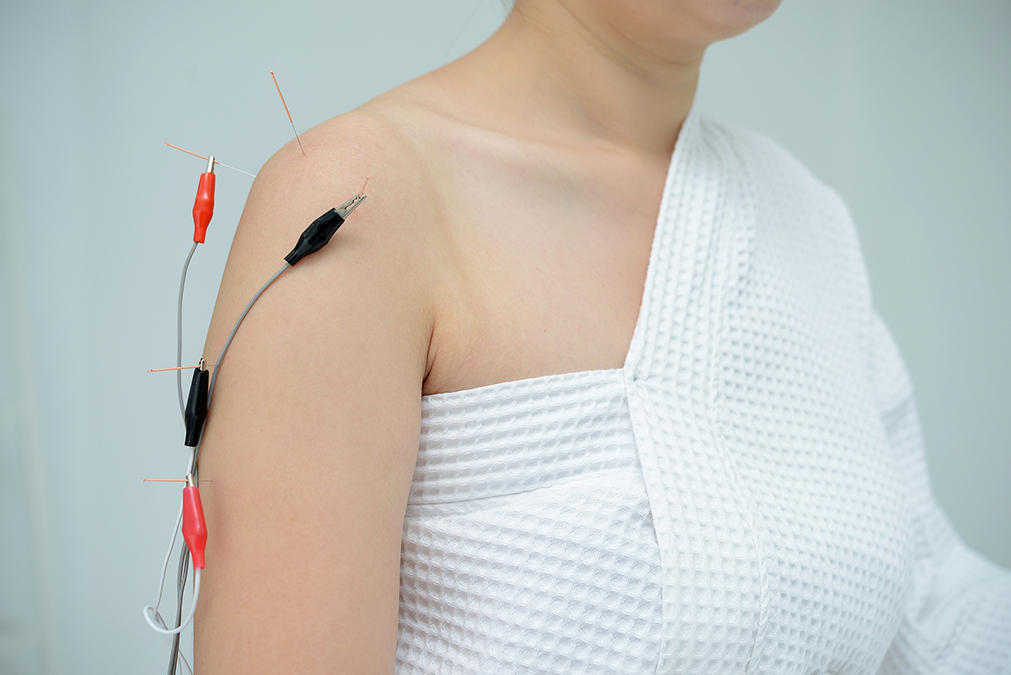 Most Western doctors will laugh at you if you suggest this treatment.
Most Western doctors will laugh at you if you suggest this treatment.
But a new study published in the journal Arthritis & Rheumatology reveals that you’ll have the last laugh if you try it.
Over 60% of participants drastically improved their arthritis in two months. They got even better as they kept using it.
A research team led by the Beijing University of Chinese Medicine recruited 480 people aged 45–75 who had been diagnosed with knee osteoarthritis and who had been complaining of knee pain for more than six months.
They divided their participants into three groups: one received electroacupuncture, one received manual acupuncture, and one received sham acupuncture.
Electrodes were attached to the needles in all three groups, although the current was turned on in only the electroacupuncture group.
With manual acupuncture, the needles were inserted into the correct locations at the correct depths; in sham acupuncture, the needles were placed in the wrong places at the wrong depths.
After eight weeks with three treatments per week, the researchers measured the participants’ pain and function levels on the Numeric Rating Scale and the Western Ontario and McMaster Universities Osteoarthritis Index function subscale. Only those who improved significantly on both scales were counted as successfully treated cases.
Overall, 60.3% of the electroacupuncture group, 58.6% of the manual acupuncture group, and 47.3% of the sham acupuncture group reported that their treatments had been successful.
The electroacupuncture group was 13% better off than the sham treatment group. While it appeared that the manual treatment group had improved, the difference between them and the sham group was not statistically significant.
This means that, at eight weeks, only the electroacupuncture group had definitively improved.
However, the manual treatment group showed large and statistically significant improvements after 16 and 26 weeks, along with the electroacupuncture group.
Therefore, acupuncture—especially electroacupuncture—can improve function and reduce pain for people with knee osteoarthritis.

 Overcoming IBD
Overcoming IBD Multiple Sclerosis
Multiple Sclerosis Banishing Bronchitis
Banishing Bronchitis Gum Disease Gone
Gum Disease Gone Overcoming Onychomycosis
Overcoming Onychomycosis Neuropathy No More
Neuropathy No More The Prostate Protocol
The Prostate Protocol Brain Booster
Brain Booster
 Ironbound
Ironbound
 Solution for Shingles
Solution for Shingles
 The Bone Density Solution
The Bone Density Solution
 The Ultimate Healing Protocol
The Ultimate Healing Protocol
 The Parkinson's Protocol
The Parkinson's Protocol
 The Chronic Kidney Disease Solution
The Chronic Kidney Disease Solution
 Overthrowing Anxiety
Overthrowing Anxiety The Fatty Liver Solution
The Fatty Liver Solution The Hypothyroidism Solution
The Hypothyroidism Solution
 The End of Gout
The End of Gout The Blood Pressure Program
The Blood Pressure Program
 The Oxigized Cholesterol Strategy
The Oxigized Cholesterol Strategy
 Stop Snoring And Sleep Apnea Program
Stop Snoring And Sleep Apnea Program
 The Arthritis Strategy
The Arthritis Strategy The Vertigo & Dizziness Program
The Vertigo & Dizziness Program The 3-Step Diabetes Strategy
The 3-Step Diabetes Strategy Hemorrhoids Healing Protocol
Hemorrhoids Healing Protocol The Erectile Dysfunction Master
The Erectile Dysfunction Master Weight Loss Breeze
Weight Loss Breeze The IBS Program
The IBS Program The Insomnia Program
The Insomnia Program The Migraine and Headache Program
The Migraine and Headache Program The Neck Pain Solution
The Neck Pain Solution The Menopause Solution
The Menopause Solution The Ejaculation Master
The Ejaculation Master The TMJ Solution
The TMJ Solution The Acid Reflux Solution
The Acid Reflux Solution The Fibromyalgia Solution
The Fibromyalgia Solution The Psoriasis Strategy
The Psoriasis Strategy